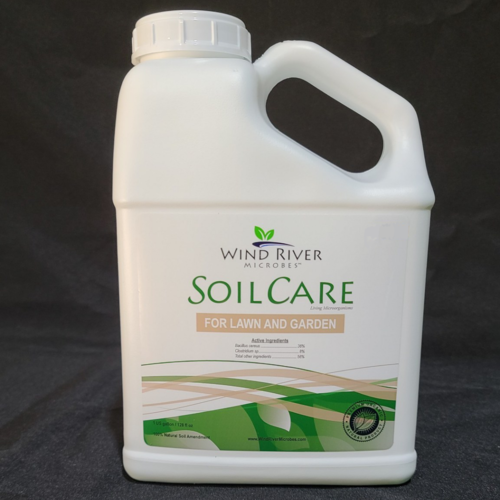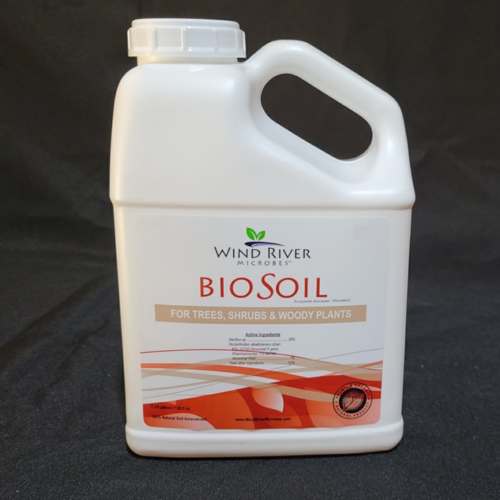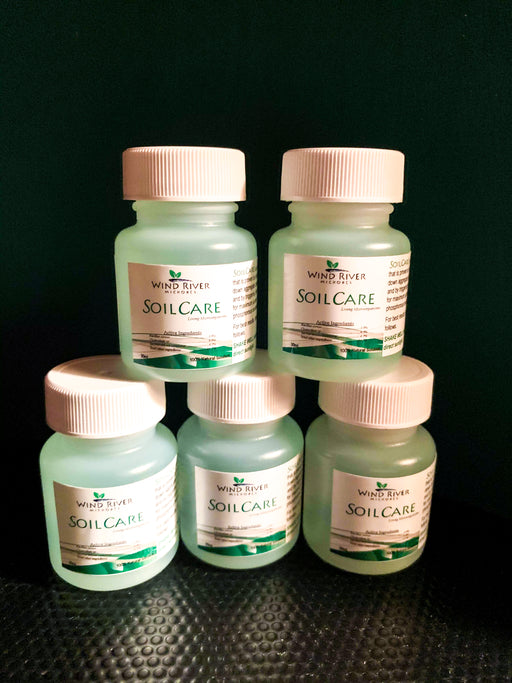
Landscaper
The grass is always greener...where you spray microbes. Suddenly your competitive advantage rises to the top, while your job just got a lot easier to maintain. Your customers' soil, plants, and trees will be the healthiest on the block with organic microbes. But the greatest benefit of all when applying Wind River Microbes to a landscaping project is assurance. By applying microbes, you are giving your plants and lawn the greatest opportunity to survive the stresses of transplanting, ensuring root growth and development, and maximizing survivability rates.
FAQs
How often do you apply to soils?
It depends on your application. Lawn, garden, landscaping projects, and potted plants require more frequent, smaller applications. Large acreages require heavier applications with less frequency.
Are there any crops not recommended for microbe use?
No. Berries, radishes, sweet potatoes, parsley, peppers, potatoes, and rhubarb require more acidic soils for optimum growth, so a lesser dosage of microbes is recommended.
Does it replace fertilizer?
Plants typically utilize only half of an any fertilizer applied. Our microbes are a growth promotant and can greatly enhance the utilization of fertilizer by the plant. When regularly using microbes, you may drastically reduce the amount of fertilizer input, thus reducing costs.
Can I use it with Miracle-Gro®?
Absolutely you can. However, when using Wind River Microbes, it is recommended that you use 25% - 5o% less Miracle-Gro or any fertilizer because of the plants' increased ability to absorb the nutrients in the soil. This will result in substantial cost savings on fertilizers.
Is it an insecticide?
No.
Does it kill grassburs? Sandburs?
No. Our microbes may be used in conjunction with a non-Glyphosate burr killer for an optimum kill rate.
Can the microbes be tank-mixed with fertilizers, pesticides or herbicides?
A stand-alone application is always best. Anytime you mix the microbes with chemicals or other compounds, you are creating a completely new compound. Because the microbes are living organisms, you risk the efficacy when tank-mixed. However, if you absolutely must tank-mix, please review the section on "Tank-Mixing Compounds."
What time of the year is best for spraying?
You may spray any time of the year with the exception of extremely freezing temperatures. For optimum penetration, application prior to a good rain is best.
How do I apply Wind River Microbes to Potted Plants?
- Use BioSoil for woody plants, SoilCare for all others.
- Use non-chlorinated water (mineral or rainwater) if possible.
- Apply to seed or soil to promote growth and plant health.
- Apply to leaves (foliar) to prevent or mitigate leaf pathogens and pests.
- When potting or repotting, spray Wind River Microbes directly on the root mass.
- Watering can: Mix Wind River Microbes at a rate of 10 milliliters per gallon (1 teaspoon = 4.93 milliliters) per gallon. Mix well, and water normally.
- Hand Sprayer: Mix Wind River Microbes at a rate of 5 milliliters (1 teaspoon = 4.93 milliliters) per quart. Mix well and apply to leaves or soil. If applied to soil or seed, water in immediately after application.
- Backpack sprayer: Mix Wind River Microbes are a rate of 10 milliliters per gallon (1 teaspoon = 4.93 milliliters) per gallon. Mix well and apply to soil, water in immediately after application.
Where can I view the Wind River Microbes Tank-Mixing Compatibility Chart?
Please view the Wind River Microbes Tank-Mixing Compatibility Chart here.
Can I talk to someone about using Wind River Microbes on my landscaping projects?
Absolutely! Please fill out the Free Microbes Consultation for Landscapers form below and someone will get back to you soon!
-
 Sale
from $64.95| /
Sale
from $64.95| /SOILCARE - Probiotics For Lawn and Garden
Healthy Soil, Healthy Plants - It's Not Magic, It's Microbes... BEST USED ON SOILS THAT HAVE NOT HAD HEAVY CHEMICALS APPLIED Wind River Microbes...
View full detailsfrom $64.95| /Sale -
 Sale
$139.95| /
Sale
$139.95| /BIOSOIL - Probiotics For Trees, Shrubs & Woody Plants
Healthy Soil, Healthy Plants - It's Not Magic, It's Microbes... BEST USED ON TREES, SHRUBS & WOODY PLANTS Wind River Microbes BIOSOIL Formula ...
View full details$139.95| /Sale -
 Save 20%
Original price $15.00Current price $11.95| /
Save 20%
Original price $15.00Current price $11.95| /SOILCARE Starter Pack - Probiotics For Lawn and Garden
Healthy Soil, Healthy Plants - It's Not Magic, It's Microbes... The 4 Secrets to Protect Your Plants 🌱 while Saving Money 🤑 Meet Mr. and Mrs. Bro...
View full detailsOriginal price $15.00Current price $11.95| /Save 20%



